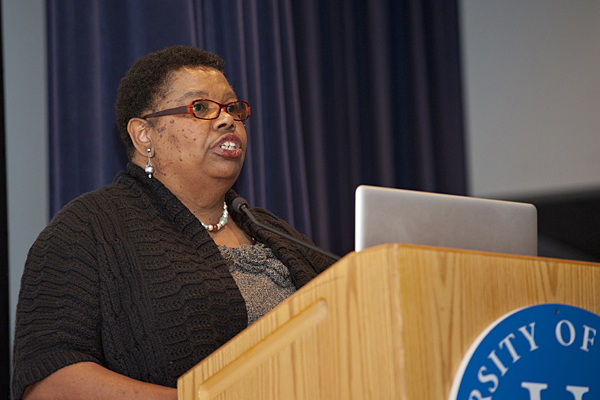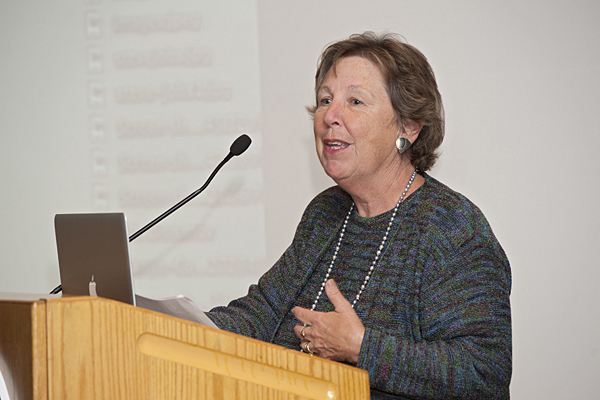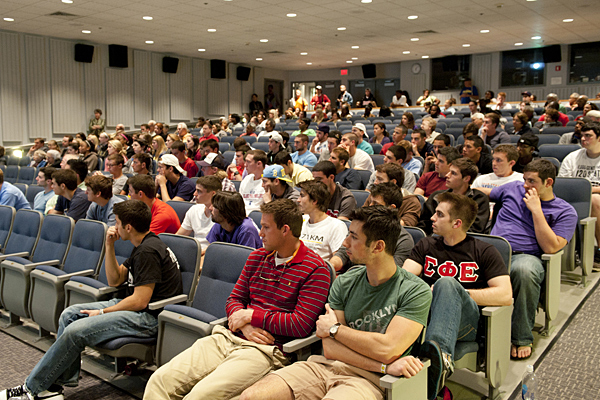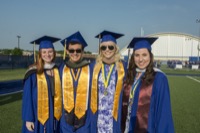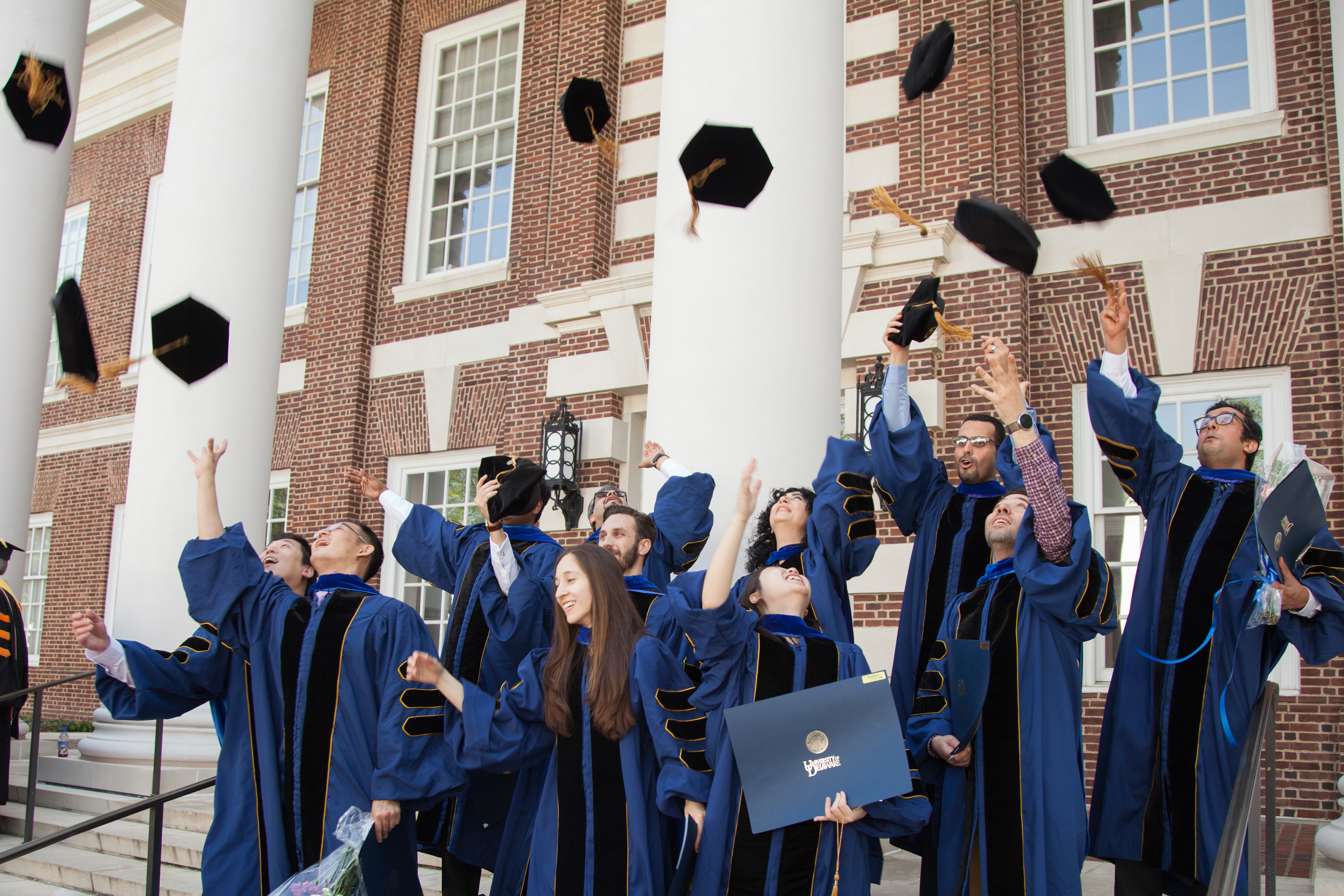Neighborhood history
UD celebrates New London Road's African American community
2:18 p.m., Nov. 3, 2011--For more than two centuries, the University of Delaware has been an iconic piece of Newark, and the neighboring African American community has deep roots, as well. While in the past they might have seemed like separate worlds, now both communities are working together to preserve an important and largely unknown part of Newark’s history.
Campus Stories
From graduates, faculty
Doctoral hooding
“My, how things have changed!” Florine Henderson said in the Trabant University Center Theatre Tuesday, Oct. 18, to a crowd of nearly 100 students, staff, friends and family -- all there to celebrate the completion of a project that recognizes the rich past of Newark’s African American community around the intersection of Cleveland Avenue and New London Road.
In addition to being a part of that community, Henderson, who has worked in the admissions office at the University of Delaware since 1983, is the founder of the Black Heritage Coalition.
“Fifty years ago, we would have merely graced this area of the University of Delaware as the help,” she recalled, “serving as members of the custodial or dining staff.
“Today,” she continued, “we gather at the Trabant University Center as distinguished guests to celebrate a fascinating history -- the fascinating history of our community. Time sure does bring about a change.”
The presentation honored the African American neighborhood while bringing to light a very important aspect of Newark’s history of which many residents had not been aware.
Margaret L. Andersen, associate provost for academic affairs and Edward F. and Elizabeth Goodman Rosenberg Professor of Sociology, explained the significance of the project.
“Some years ago, members of the New London Road/Cleveland Avenue community asked the University to help document and preserve the stories, experiences and values of this community, “ Anderson said, “As you will soon see, that project has now unfolded to give us a living documentary of the experience and the achievements of those who have lived there as well as those who continue to live there.”
Also unveiled at the presentation was the New London Road Community Walking Tour -- a tour of the neighborhood’s main streets, complete with stories about the lives of the people who lived there. Using a smartphone, one can venture through 12 stops -- walking from New London Road, just north of the train tracks, to St. John Church -- listening to residents recount the way things were in the African American community long ago.
The tour can also be taken virtually, through the UD Department of Art Conservation website, enabling people all over the world to learn of the neighborhood’s intriguing past.
Henderson said she shares the same sense of pride that her neighbors feel about the project as they realize what their now-documented past means for the future of the community. “It will be passed down from generation to generation,” Henderson said. “Our town as we knew it will live on in the hearts of our children and our children’s children.”
Henderson offered the same words of wisdom and encouragement that she says she often gives to her grandchildren. “To whom much is given, much is required. We who were virtually poor in material things were made rich in those things that money cannot buy. We were blessed to be raised in a community where love abounds. Our community gave us all that it had. It’s time to give back.”
Article by Ryan Maguire
Photos by Evan Krape






